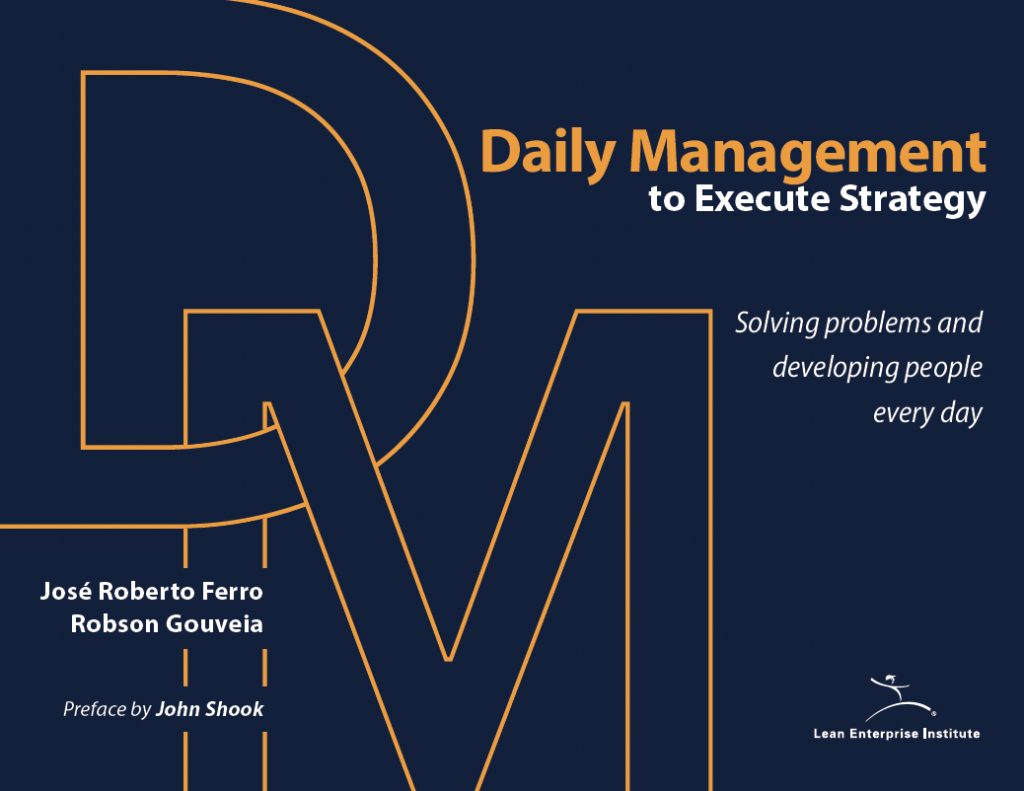How do we measure our progress in an organization? How do we know what type of indicators we are using and what do they tell us about the current state of our processes? How do we know when we get there? What do we raise the bar on to show improvement?
These are just a few of the questions we hear from organizations that want to understand more about what data they are tracking and how they respond to what that specific information tells them. How much of it is truly value added to the company and customer?
What we do is break down the key performance indicators (KPIs) that organizations track into two categories: lagging indicators and leading indicators. Lagging indicators are results-oriented, in that they appear after something has happened. Some would say they’re historical in nature, since they are often a reaction to something that has already taken place in a process, perhaps months ago. In the car industry, for example, this could be a warranty claim a customer filed with the dealership for a creaky suspension. As the manufacturer, it takes a lot more effort to know what actually happened to cause the problem and when. In fact, it’s impossible to go back in time to re-create the exact scenario that allowed the discrepancy to happen. This can often put us in symptom-fighting mode, also known as firefighting. This mode is not always sustainable, nor is it especially value added.
Leading indicators, on the other hand, are KPIs that are tracking right at the process. This gives us a real-time measure as to when we may be out of standard or don’t have what is needed, when it’s needed, to produce our service or output. The beauty of leading (process-oriented) indicators is that while it can take months to get a report that tells the organization, “How are we doing?”, they can tell you what’s happening in the moment.

So for example, let’s look at safety—say a team member gets injured during their work process. This gets documented on an incident-rate report in most organizations. So think about it – I am tracking an injury after it happened. This is a necessary process in the majority of organizations due to OSHA or other safety mandates, but now I have to ask myself, “What does this information tell me about the process?” If the actual incident happened 1-3 days before the report came out, are we able to know what really caused it? Maybe, but it won’t be easy. That incident-rate report is a lagging indicator.
We find the majority of KPIs tracked are lagging (results-oriented) indicators. It seems to be a pattern across various types of industries – not just manufacturing. It is a common misconception that we should only track lagging indicators, as many feel they give us the most information.
But isn’t it better to have a process indicator that gives us a predictive factor before the injury actually happens? That would be more of a leading indicator – and that is where you can shift the focus from results after the fact, to process in the moment. Given the above example, maybe there were trends that were overlooked. Perhaps someone mentioned “This flow rack is very high and I have to reach several times a day.” Maybe there was a near-miss incident that hinted at a larger problem. That information could be predictive to an injury, letting us address the problem in real time – not just waiting for something to happen before we take action.
So, how do you start identifying your indicators?
One way is to take a closer look at your daily processes. Asking questions of your team members about how their process is going and whether or not there are issues can help you grasp the situation of predictive measure versus reactive. One way we have seen organizations do this is a “how’s your process” check. This creates a daily touch-point so the supervisor can see if there are any issues with processes. This is then logged on a visual management chart for Safety and posted daily. If something goes wrong it gives us a very specific window of time to track the discrepancy. This check can greatly reduce incident rates by shifting focus to the process itself (leading) versus tracking only after a problem has happened (lagging).
If an organization can shift a percentage of its lagging indicators to leading, they will see that the new focus on processes (and improving them through standardization) will begin to show the results they normally would be focusing on. Measuring the process in real time each day gives us a trend analysis that is perhaps a few hours old, versus a three-month quarterly report to which we will react in hopes that we make changes in something we are unsure of. I often say it’s like “throwing a dart at a moving target.”
So if you want to stay out of an endless “firefighting mode” with a team of hose-holders, then it’s time to change viewpoints and analyze your available measurements of a process’s success. There will always be a level of reactivity in an organization and that is normal in most businesses. But to do business each day in a reactionary mode is not good for long-term sustainability and growth. The key is to bring awareness to the indicators at your business – and you can do this through gemba walks, problem solving, creating standardized work, and better visualization (e.g. what is the current state versus the ideal state through visual management?). The more people can see, the more abnormalities will surface, the more the problem awareness muscle can be strengthened, and your culture can finally start to change.
~Tracey and Ernie Richardson
Editor’s Note: This Lean Post is was published on February 3, 2016. Its insights on KPIs align closely with the principles outlined in LEI’s new book Daily Management to Execute Strategy.
Managing in Time with Daily Management
Learn how to operate with continuous improvement.








Hi Ernie and Tracey! This was a great article to explain the difference between lagging and leading indicators. I’m a current supply chain management major at the University of Rhode Island and we study KPIs in many of my classes. I never even knew there were two kinds of KPIs. This article was fascinating, and I enjoyed learning about how placing an emphasis on leading indicators can proactively manage issues by predicting and preventing them, rather than reacting to them after they already happened. It’s interesting how that shift of focus to real-time process tracking can help organizations prevent issues and create safer and more sustainable operations. We learned in class how important tools like Gemba Walks and standardized work can be in identifying problems and supporting continuous improvement initiatives.